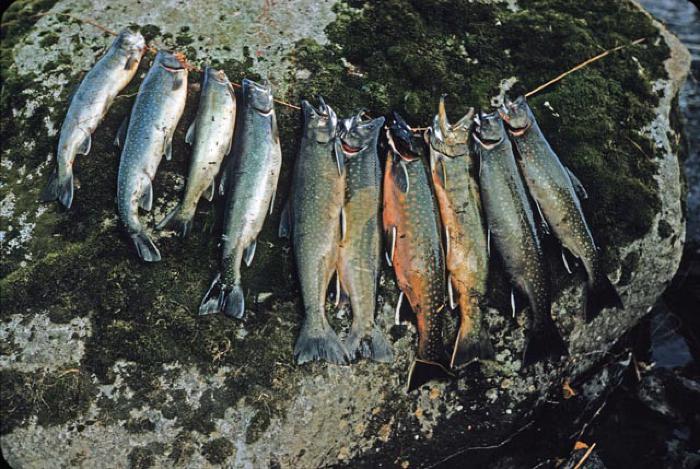Dolly Varden — Nanwam Ancia

Dolly Varden (Salvelinus malma Walbaum) belong to a group of fishes called char. The light spots on their sides distinguish dollys from most trout and salmon, which are usually black spotted or speckled. There are two varieties of Dolly Varden in Alaska waters. The southern variety ranges from southeast Alaska to the tip of the Aleutian Chain, and the northern variety occurs from Bristol Bay to Alaska’s northern coast.
In Alutiiq, the words nanwam ancia mean lake trout, referring to the common habitat of Kodiak’s Dolly Varden. However, Alutiiq people also use the word anciq meaning trout, for these small fish. However, these fish should not be confused with Kodiak’s two varieties of arctic char — rainbow trout and steelhead trout.
Kodiak’s dollys are available most of the year, from September through mid-May. They reach maturity between age five and six, at a length of twelve to sixteen inches and a weight of up to a pound. Although small, these fish are an important subsistence resource because they can be harvested in winter. They are a source of fresh food that can be harvested from lakes and streams when the weather makes it difficult to fish and hunt in ocean waters. Dollys are also abundant and easy to catch. Historic sources suggest that Karluk residents dried Dolly Varden alongside salmon.
In Alaska’s territorial days, Dolly Varden were also a source of cash. Westerners considered them a pest because they were seen to prey on salmon eggs and fry. Between 1921 and 1941, the federal government set a bounty on these small fish, paying two cents for every Dolly Varden tail.
